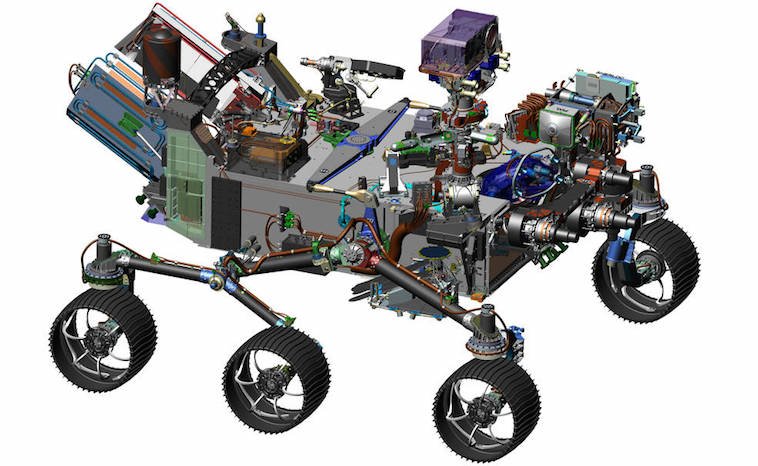NASA’s New Mars Rover

As NASA’s Curiosity rover completes its mission, NASA has plans to replace the rover with a newer model. Read on to learn more about NASA’s Mars 2020 Rover.
When NASA launched its Curiosity rover in 2011, it planned to have it collect data for two or three years. This year Curiosity celebrated its seventh year traveling all over the surface of Mars. It has successfully collected data revealing a mountain of data for scientists to sift through. However, the Curiosity rover has started to decline in its data storage efforts.
NASA announced this week that they are switching over to the backup computer inside Curiosity to correct the main computers data issues. Presumably, they believe that it will work and then they will switch the computer back on. However, they have no guarantees that it will turn back on. All things considered, it seems that Curiosity’s days of data collection are coming to an end. As sad as that may be, NASA has a planned launch of a new rover, Mars 2020, to take Curiosity’s place.
MARS 2020 Rover
Using Curiosity as a base model, NASA designed a similar model with newer technologies and features on board. The goal for Mars 2020 remains the same as Curiosity. NASA plans to have the rover investigate the red planet for life. In May of 2018, Curiosity revealed methane gas deposits on Mars. That information led to much excitement in the scientific community. Why?
On Earth, methane gas comes from living organisms. Therefore, scientists concluded that Mars must have organisms living somewhere below the surface The Mars 2020 rover will investigate a region that scientists believe will be favorable for microbial life. Throughout its investigation, it will collect samples of soil and rock. “About 30 of these sample tubes will be deposited at select locations for return on a potential future sample-retrieval mission.” (NASA 2018) At this point, the scientists here on Earth will have actual artifacts from Mars to conduct their tests. Meanwhile, with Mars 2020, scientists will benefit from the advancement of Earth-based technology. A lot has changed since 2011.

Credit: NASA
Credit: NASANew Tools New Technology
What new technologies has NASA placed on board Mars 2020?
- Mastcam-Z -an advanced camera system with panoramic photo capability with the ability to zoom. Meanwhile, it can also take two pictures of the same object from different angles and combine them for viewing. This gives the scientists a 3-d picture of the object.
- SuperCam- an instrument that can provide imaging, chemical analysis, and mineralogy. For example, it will be able to detect the presence of organic compounds in rocks.
- Planetary Instrument for X-ray Lithochemistry (PIXL)- an X-ray fluorescence spectrometer. In other words, it will scan the surface for elemental analysis.
- (SHERLOC)- a spectrometer that will provide fine-scale imaging. It uses an ultraviolet (UV) laser to determine fine-scale mineralogy and detect organic compounds.
- The Mars Oxygen ISRU Experiment (MOXIE)-an exploration technology investigation that will produce oxygen from Martian atmospheric carbon dioxide.
- Mars Environmental Dynamics Analyzer (MEDA)- a set of sensors that will provide measurements of temperature, wind speed and direction, pressure, relative humidity, and dust size and shape. At this point, scientists will have a better understanding of what astronauts would face on the ground.
- The Radar Imager for Mars’ Subsurface Exploration (RIMFAX)- a ground-penetrating radar that will provide centimeter-scale resolution of the geologic structure of the subsurface.
Mars 2020 Goals
Aside from learning more about the surface of Mars NASA wants to see if they can make oxygen. How do they plan to do that? Using their new Moxie system, they will see if they can produce oxygen from the carbon dioxide on Mars. A successful test will possibly mean manned space missions to Mars. Furthermore, they want to have ongoing manned trips to eventually set up space stations. The new rover will surely help in determining this plan by NASA.
